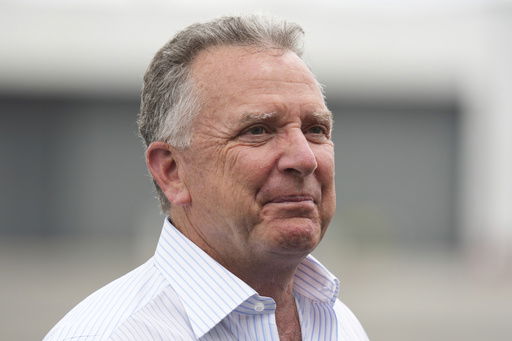Witkoff plans to visit the Mideast in push for Gaza ceasefire, State Department spokesperson says

By FARNOUSH AMIRI and MICHELLE L. PRICE
Associated Press
WASHINGTON (AP) — President Donald Trump’s special envoy, Steve Witkoff, planned to head to the Middle East as the U.S. tries once again to reach a ceasefire deal between Israel and Hamas, the State Department’s spokesperson said Tuesday.
Department spokesperson Tammy Bruce told reporters that Witkoff was going to the region with a “strong hope” that the U.S. can deliver a ceasefire deal as well as a new humanitarian corridor for aid distribution.
“I would suggest that we might have some good news, but, again, as we know, this could be a constantly changing dynamic,” said Bruce, who didn’t have other details about where Witkoff would be going or what he had planned.
Three U.S. officials said Witkoff is traveling to Europe this week to discuss a range of issues, including Gaza and the push for a ceasefire, but they had no details about Middle East stops and did not share where specifically Witkoff would travel to and when.
The officials were not authorized to comment publicly and spoke on condition of anonymity.
The State Department press office didn’t respond to messages seeking more details on Witkoff’s travel, and it wasn’t immediately clear what his schedule would be this week.
A breakthrough in talks on a ceasefire deal has eluded the Trump administration for months as conditions worsen in Gaza. The territory had its deadliest day yet for aid-seekers in over 21 months of war, with at least 85 Palestinians killed while trying to reach food Sunday.
The Israeli army has said it fired warning shots, but says the reported death toll was greatly inflated. The United Nations’ food agency accused Israeli forces of firing on the crowd of Palestinians seeking humanitarian aid.
Bruce said the incident that took place while civilians were trying to reach aid entering through the Zikim crossing with Israel is “absolutely horrible” and reinforced why the U.S. is pushing for a new humanitarian corridor to be created as part of any truce.
The sides have held weeks of talks in Qatar, reporting small signs of progress but no major breakthroughs. Officials have said a main sticking point is the redeployment of Israeli troops after any ceasefire takes place.
The U.S. plan calls for a 60-day truce, during which Hamas would release some hostages while Israel would free Palestinian prisoners and allow a surge of humanitarian aid into Gaza. During the 60 days, the sides are also to begin negotiations on a permanent end to the war.
Israeli Prime Minister Benjamin Netanyahu has vowed to continue the war until Hamas yields power and is disarmed, while Hamas says it will not release all of the hostages until the war is over. It is seeking assurances that Netanyahu will not resume the war after the 60 days, as he did in March after an early ceasefire expired.
Hamas is holding 50 hostages — 20 of whom are believed to still be alive.
___
Amiri reported from New York.




